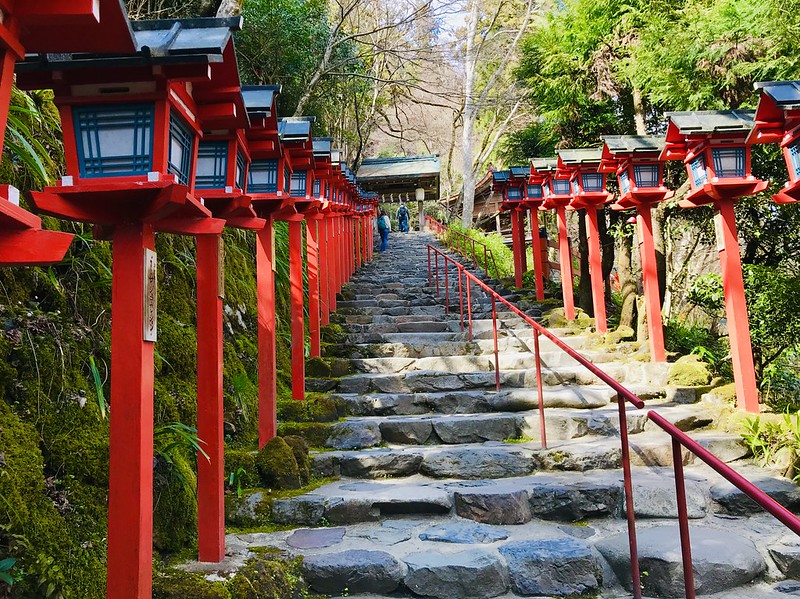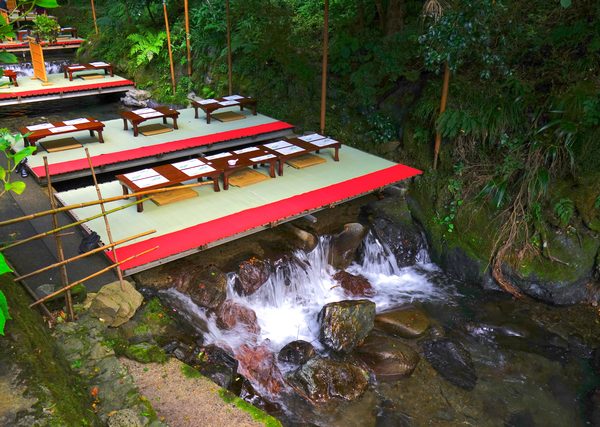

Kifune Shrine
Discover your fortune in the sacred waters of Kyoto's mystical mountain shrine.
Nestled in a lush, forested valley in northern Kyoto, Kifune Shrine is dedicated to the dragon god of water and rain, and is famous for its unique floating water fortunes.
History of the Shrine
The exact origins of Kifune Shrine are unknown, but it is undoubtedly one of the oldest shrines in Kyoto, with records suggesting its existence for over 1,300 years. Legend states that the goddess Tamayori-hime, the mother of Japan's mythical first Emperor Jimmu, traveled from Osaka up the Yodo and Kamo rivers in a yellow boat ('ki-fune'). Her journey ended at the source of the river in this valley, and the shrine was established at the spot where her boat came to rest to honor the deity of the water source.
Throughout history, Kifune Shrine has held a special relationship with the Imperial Court. When the country suffered from long droughts, an imperial envoy would be sent to pray for rain, offering a black horse. In times of prolonged rain and flooding, a white or red horse would be offered to pray for the rain to stop. This practice is believed to be the origin of 'ema' (picture-horse) prayer plaques.
The Enshrined Kami
The main deity of Kifune Shrine is Takaokami-no-kami, a powerful dragon deity who governs all sources of water, including rain, snow, rivers, and springs. As the controller of this life-giving element, the kami has been worshipped for centuries with prayers for bountiful harvests and protection from floods and droughts.
Because water is the source of all life energy ('ki'), the shrine is also considered a place to pray for renewed vitality and 'ki-fune' (the 'fune' character here means 'to rise'), symbolizing a rejuvenation of spirit. Furthermore, the Middle Shrine is dedicated to Iwanaga-hime, a kami of matchmaking and long-lasting relationships, making Kifune a powerful spot for those seeking blessings in both life's energy and love.
What to See
The shrine is famous for its iconic stone staircase lined with red wooden lanterns, which creates a magical, enchanting path into the forest. This is one of the most photographed scenes in Kyoto, especially in winter when snow dusts the lanterns. The shrine complex is actually split into three parts along the valley: the Main Shrine ('Hongu'), the Middle Shrine ('Yui no Yashiro'), and the Rear Shrine ('Okunomiya').
The most unique experience at Kifune is the 'mizu-ura-mikuji' (water fortune paper). Visitors receive a blank slip of paper ('omikuji'). When this paper is floated on the shrine's sacred spring water, the characters of one's fortune magically appear on the surface, as if the water kami himself is revealing the message. The Middle Shrine, Yui no Yashiro, is famously dedicated to a kami of matchmaking and is a popular spot for those praying for love and marriage.
Major Festivals
The 'Kifune Matsuri' on June 1st is the shrine's main annual festival, featuring a procession with a 'mikoshi' and performances of ancient court music. The 'Tanabata' festival in early July is particularly beautiful, with nighttime illuminations of the lantern-lined staircase and colorful 'tanzaku' prayer slips hanging from bamboo. During the summer months, restaurants along the river build platforms ('kawadoko') directly over the water, allowing diners to enjoy a meal cooled by the river's spray, a famous Kyoto summer tradition that originated here.
Support Kifune Shrine
Your participation helps preserve this sacred site for future generations. Every digital offering contributes to real shrine preservation efforts across Japan.
By making an offering, you become part of a global community honoring Japanese spiritual traditions and supporting the cultural heritage that has been cherished for centuries.